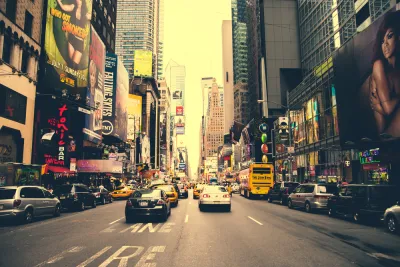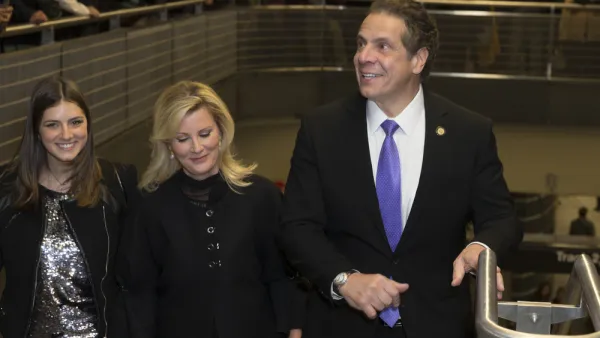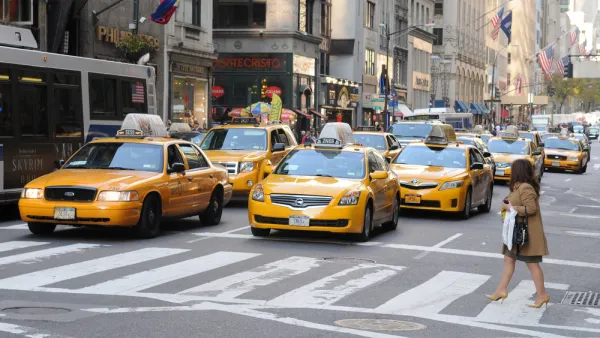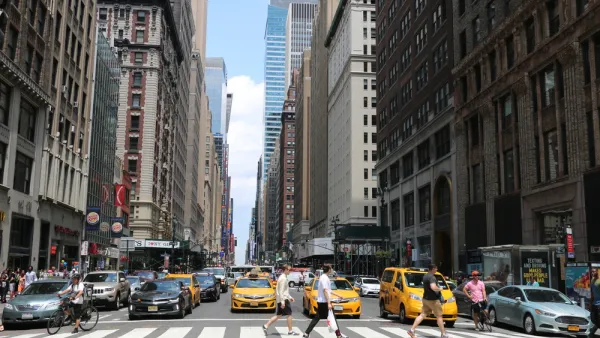Ten years after former NYC Mayor Michael Bloomberg's congestion pricing plan died on the state Assembly floor, expect to see a similar plan revived by Gov. Andrew Cuomo (D-N.Y.). New York Times metro reporter, Winnie Hu, explains why it never died.

"For decades, urban planners, economists, city officials and business leaders have revived again and again some version of a toll system both to manage the city’s worsening traffic and provide more revenue for public transit, writes Winnie Hu, a reporter on The New York Times Metro desk, focusing on transportation and infrastructure.
Now a state task force, called Fix NYC, has been assembled with the goal of developing another congestion pricing plan.[...]. Mr. Cuomo, after once expressing doubt about congestion pricing’s chances, is expected to unveil a plan early next year and make it a centerpiece of his legislative agenda.
Hu chronicles the movement to keep congestion pricing (also known as cordon pricing because tolls would apply toward a specific area, below 60th Street in Manhattan, much like London, Stockholm and the world's first scheme in Singapore) alive after former Mayor Michael R. Bloomberg's bill died in Albany after state legislative leaders refused to bring it to a vote (also posted here).
Congestion pricing “never really went away” said Mitchell L. Moss, the director of the Rudin Center for Transportation Policy and Management at New York University, noting that “it has an intrinsic appeal — a single solution that raises revenue, improves our environment and reduces congestion.”
Central to the effort were three congestion pricing advocates: Sam Schwartz, Charles Komanoff and Alex Matthiessen, brought together by transit advocate, Theodore W. Kheel, a prominent lawyer and labor arbitrator, to work on the issue. Kheel passed away two years after Bloomberg's bill died.
The three continued to promote Bloomberg's plan under the group, Move NY, but made some significant changes, like lowering tolls on some bridges while adding tolls to the untolled East River bridges, a key part of the plan. Funding was provided by The Rockefeller Foundation and the Nurture Nature Foundation, which was founded by Mr. Kheel.
Timing is right in 2017
This year, the state of decay of the New York subway became really evident. In June, Gov. Cuomo declared a "state of emergency" for the subway. [See Nov. 18 update by Brian M. Rosenthal, Emma G. Fitzsimmons and Michael Laforgia in the Times]. It was painfully clear that the subway needed modernization funds.
Also this year, Cuomo, a "car guy", took notice of improvements in bridge tolling technology. Having recently celebrated the opening of the long-stalled replacement of the Tappan Zee bridge, he recognized the benefits of electronic toll technology which enable toll collection via E-ZPass transponders and vehicle license-plate recognition, eliminating the congestion caused by the presence of toll booths. Cuomo was on-board.
Challenges ahead
Before the congestion plan gets to be debated in Albany, presumably it has to pass the New York City Council, as its predecessor did on March 31, 2008, and be signed by Mayor Bill de Blasio, an opponent, who doesn't believe it is fair. Rather than charging drivers to enter Manhattan, he wants to pursue "a tax on wealthy New Yorkers to pay for improvements needed to address the crisis engulfing New York City’s subway," reported Emma G. Fitzsimmons on Aug. 6 for the Times.
"Asked what aspects of congestion pricing the mayor does not believe in, a spokesman for Mr. de Blasio returned to the idea of a new tax to fund transportation," reported David Goodman on Aug. 21 for the Times.
“It’s not a secret that the wealthiest among us aren’t paying their fair share,” said the spokesman, Austin Finan, in a statement. “If the governor disagrees, he should submit his own plan and we’ll evaluate it on the merits, including fairness and equity.”
Look for that plan next month.
FULL STORY: New York’s Tilt Toward Congestion Pricing Was Years in the Making

Analysis: Cybertruck Fatality Rate Far Exceeds That of Ford Pinto
The Tesla Cybertruck was recalled seven times last year.

National Parks Layoffs Will Cause Communities to Lose Billions
Thousands of essential park workers were laid off this week, just before the busy spring break season.

Retro-silient?: America’s First “Eco-burb,” The Woodlands Turns 50
A master-planned community north of Houston offers lessons on green infrastructure and resilient design, but falls short of its founder’s lofty affordability and walkability goals.

Test News Post 1
This is a summary

Analysis: Cybertruck Fatality Rate Far Exceeds That of Ford Pinto
The Tesla Cybertruck was recalled seven times last year.

Test News Headline 46
Test for the image on the front page.
Urban Design for Planners 1: Software Tools
This six-course series explores essential urban design concepts using open source software and equips planners with the tools they need to participate fully in the urban design process.
Planning for Universal Design
Learn the tools for implementing Universal Design in planning regulations.
EMC Planning Group, Inc.
Planetizen
Planetizen
Mpact (formerly Rail~Volution)
Great Falls Development Authority, Inc.
HUDs Office of Policy Development and Research
NYU Wagner Graduate School of Public Service




























